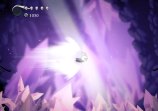Researchers have discovered that asteroid strike made instant Himalayas or craters. The impact reportedly killed dinosaurs but created niches for life.
Meteorite Crashed On Yucatan Peninsula & Killed Dinosaurs
The secrets of the cataclysm that wiped out the dinosaurs are now revealed. Researchers sought this project and drilled beneath the seabed crater Chicxulub, a meteorite that is more than 10 kilometers in diameter has caused the stratospheric gap 66 million years ago. It crashed in the area that is now called Yucatan Peninsula (Mexico) and deleted the dinosaurs from the face of the Earth.
The event that occurred at the end of the Cretaceous period marked the extinction of several species, not just the dinosaurs. All material up into the atmosphere would have darkened the sky and cooled the planet.
Chicxulub Crater: Similar To Moon's Peak Rings
Sciencemag says that scientists have conducted mission and instruments to understand the Chicxulub. This NASA lunar mission showed that the peak rings within the Orientale impact basin are similar to Chicxulub. Researchers have also found that Chicxulub's peak ring and the crater is similar to what is seen on Moon, Mars, and Mercury.
According to BBC, the phenomenon that created Chicxulub is described as a 15-kilometer wide stony asteroid instantly punching a cavity in the Earth's surface some 30km deep and 80-100km across. Chicxulub is unique and has a well-preserved ring. This crater is the scar and impact of the phenomenon that is still seen on Earth. Researchers are particularly interested in a feature of the crater that scientists call "peak ring."
Chicxulub Latest News & Update: Researchers Drilled Craters
The researchers also sailed 30 kilometers offshore to a drilling rig that plans to drill up to a kilometer and a half below the seabed. This effort deepened the understanding of the formation of impact craters on earth and other planets and their environmental and ecological effects.
The study platform, similar to oil, shall be based upon three piles. In the first week of drilling, it provides reach 500 meters below the floor of the Gulf of Mexico. Gradually, over the next two months, they will burrow a kilometer, and collect samples of microfossils, minerals, and different genetic traits.








